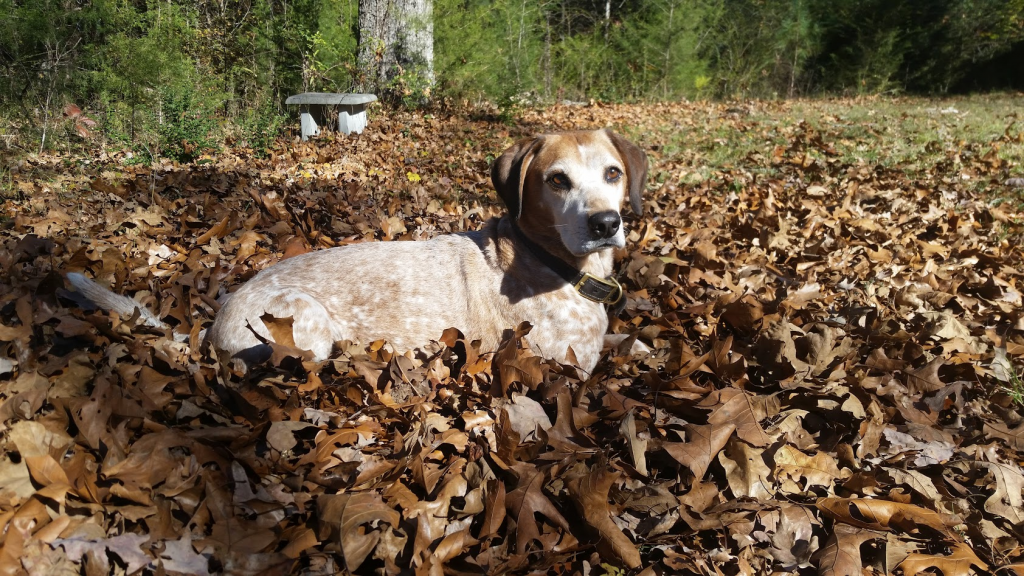
Over the past couple weeks, the signs of winter’s arrival are becoming more obvious. December has brought us some colder weather, and the same leaves that provided us with a bright, autumn display have now turned brown and are falling off the trees. Vegetable gardens are starting to look a bit worse for wear and our deciduous trees and shrubs are beginning to enter dormancy. Even the mighty pine trees are letting go of this past year and are dropping needles all across North Georgia.
For those of you who aren’t going to let a little cold weather get in your way, you may be tempted to get outside to do something with all of the fallen leaves, limbs and straw strewn across your yard. Removing leaf litter and fallen limbs to maintain a clean look in the landscape year-round is a common practice amongst many homeowners; however, I want to inform you that many members of our wildlife community will thank you if you allow at least some of the fallen leaves in your yard to remain.
For example, would you believe me if I told you that one of the most valuable things you can do to support pollinator health and conservation is as simple as doing nothing? Or, perhaps better put, one of the best things you can do for the vast majority of butterflies and moths this winter is to leave the fallen leaves where they land in your landscape this winter. The reason for this more or less comes down to these animals’ phenological response to the change in seasons. Penology concerns the timing of certain biological events in plants and animals including when they may flower, leaf, hibernate, reproduce or migrate.
For example, while the monarch butterfly undergoes a massive migration each fall to overwinter in Mexico, the overwhelming majority of our native butterflies and moths will remain local and overwinter in our landscapes. These insects will do this in one of their various life stages (egg, caterpillar, chrysalis, or adult). The way that these insects are able to survive the winter is by finding safe places to wait out the colder months. In our area, butterflies and moths will use leaf litter as one of their primary means for winter cover.
There are many examples of wildlife using fallen leaves for winter survival and the completion of their life cycles. To name a few, wooly bear caterpillars tuck themselves into fallen leaves for protection from not only from cold weather but also predators. Other species, like the red-banded hairstreak, will lay their eggs on fallen oak leaves, which ultimately become the first food of the caterpillars when they emerge. Other moths and butterfly species, such as the swallowtail and luna moth, will use the fallen leaves as a source of camouflage to disguise their cocoons and chrysalises.
So, the hard truth to the common practice of raking, mowing and blowing away winter’s gifts from our yards is that it is taking away essential sheltering sites that play a direct role in the survival of many different species of moths and butterflies, as well as dozens of other insects and arthropods.
While it may not be practical to allow every single leaf to remain where it falls, allowing some undisturbed habitat to remain in your landscape, such as uncut bunch grasses, leaf litter, brush, rock piles and logs in natural areas, provide valuable real estate for many of our beneficial insects to use as shelter to survive through the winter.
Additionally, allowing fallen leaves and straw to rot will aid in the nutrient recycling process, as these natural materials will decompose and add to the existing soil as compost. Compost improves soil in several ways. It improves the nutrient holding capacity of most soils while improving the workability of clay soils. Compost also makes a good mulch, reducing weed growth and water loss from mulched soils.
Have questions about what else you can do to have an environmentally conscious landscape? Give us a call at the Extension office or register for the Fannin-Gilmer County Agriculture and Natural Resources Blog “A Fruitful Discussion” at: site.extension.uga.edu/fannin-gilmer.